Diplomat Mine site
The Diplomat Mine interpretive site is home to two gargantuan mining shovels, built on such a scale that it’s hard to even describe them. Even in person, their size is simply overwhelming. Both are quite old and each toiled away for years at the mine extracting coal and overburden day after day, turning what was a series of farmer’s fields into massive pits where the black stuff was extracted. When the operation closed, they were simply left behind. Fortunately they were not scrapped and instead were put on display for all of us to enjoy.
Join us as we check out these fascinating giants on a dismal grey day.
The Diplomat Mine was established in 1950 as a surface or open pit operation. This was a rather novel and uncommon way to extract coal at the time, at least not on this large a scale, and most came from underground workings instead. Today the opposite holds true and all coal in the province is from surface mines.
The Diplomat closed in the mid-1980s. Coal was shipped out by a short Canadian National Railways branch, where it would be sent off to various industrial firms. Some of the output also went to a nearby power generating plant.
The first shovel seen, the “smaller” of the two, is a Bucyrus Erie model 120B built in 1944. It came here in either 1950 or 1964 depending on who you speak to. Where it worked previous is not known. This is a loading shovel that would be used to fill haul trucks directly from the coal face. I understand a second 120B also worked at the mine, but nothing much can found about it. This machine weighs around 160 tonnes and has a bucket capacity of roughly 5 cubic metres. It worked at the mine until it closed.
The model 120B was quite popular and was built from the mid-1920s to the early 1950s. Bucyrus Erie, or simply Bucyrus, was established in the 1880s and was a leader in the field of large scale surface mining equipment. Today they are owned by machinery giant Caterpillar.
Bucyrus Erie’s major competitor was a company called Marion Power Shovel or simply Marion, and the second machine at the Diplomat Mine site is from that firm. This leviathan, a model 360, was built in 1927 and came to the mine in 1950 where it worked, sometimes intermittently, for many decades. It came from a mine in Illinois (see an update in regards to this machine below).
Weighing in at roughly 500 tonnes, or over three times that of the 120B, this machine could take a 7 cubic metre bite with each pass. It sits atop eight sets of caterpillar tracks. Underneath is an crazy collection of exposed drive shafts, gears, clutches and the like – what a dangerous place!
What sight it must have been to see this machine it in operation. And what a sound it must have made.
Several dozen 360s were built in the 1920s and were quite the technical marvels of their day. Marion was acquired by Bucyrus in the late 1990s.
Both of these machines, by the way, were electrically operated with power coming in via a large “extension” cable. The 360 worked at the mine until around 1980 and was the very last of its type still in operation at that time, anywhere in the world. The Diplomat Mine, at the end, was a virtual working museum. This is a stripping shovel, which is used to remove overburden so the coal face can be worked.
Also seen ay the site is the dipper bucket assembly from a second stripping shovel. This came from “Mr Diplomat” the largest land machine in Canada for many years. This was a Bucyrus Erie model 950B, built in the 1930s and brought here in the early 1960s. It worked at the Diplomat Mine until about 1984 and only this one “small” piece was saved from it. Too bad, it would have made a nice addition to the display.
Mr Diplomat was almost three times the weight of the Marion 360, so about 1400 tonnes. It made the latter look small, if you can even fathom that. The bucket had a capacity of roughly 25 cubic metres. It’s not known if the 360 or even the 120B ever had a moniker. It was common for a mine’s biggest machinery to be named.
Another massive digger that used to operate here, which was seen by us when we last visited the site in the 1990s, but has since been scrapped, was a Marion 7400 dragline. Also used to strip overburden, it did so in the different way than a shovel. Instead of attacking the working face forward facing and head on, a dragline digs from above travelling backwards as it goes.
Attempts were made to save the machine but it was for nought. Only a bucket was rescued and today is on display in the town of Forestburg. The 7400, while it still existed, was located a few hundred metres to the west of the 120B and 960, but not on the interpretative site property.
Both machines on display are painted up for Luscar Coal, the company that oversaw operations at the mine. Every now and then the society that manages the interpretive site has an open house where you are allowed inside the machines. Wow! Next year!
While the 120B and 960 are each a colossus in their own rights, they are by industry standards today considered rather modest in size. Even the 360, which is a monster, or even Mr Diplomat, a monster’s monster, would look tiny in comparison to some of the largest stripping shovels made.
While most of the Diplomat Mine lands have been reclaimed (it was a big operation!) and are now being farmed, an area to the south of the shovels still shows the scars from being worked. Petrified wood was often unearthed during the mining process and some large chunks of that material are on display at the site. I understand it’s quite common to find fossils of all sorts in coal beds.
Across the Battle River valley (to the south) is the operating Vesta/Paintearth coal mine, whose output goes exclusively to the Battle River power plant.
We also took time to explore a nearby place called Cordel (or actually close to it), and the abandoned but photogenic Notre Dame de Savoie Church.
Many thanks to Tim Swaren who accompanied us on this trip. He’s very knowledgeable about the Diplomat Mine and the machines that once worked there.
Update: Nomember 2014. Expert Tim, remember him, had this to add about the various machines…
“Chris, just a few little clarifications on your story. The Marion 360 came from a mine in Illinois. It was actually a dragline when it was operated in Illinois. Marion introduced both the 350 and 360 models in 1927 and they were at that time the largest land machines in the world. The 350 was a stripping shovel, and the 360s were essentially 350s but in a dragline configuration. However, when the 360 came to the Diplomat Mine, it was converted into a stripping shovel. The 360 worked at the mine from 1950 until 1962. It was parked after the Bucyrus 950-B began working at the mine. But in 1976, as coal production reached a peak, the Marion was re-conditioned and put back to work. It then worked until 1980 and was parked again, pretty well exactly where it sits now. The Bucyrus 950-B also came from a mine in Illinois. It was originally built in 1935 and came to Forestburg in 1962. It worked until 1984 and was then parked. It was scrapped in 1990-91.”
To see what the 120B and 360 looked like almost 20 years ago, go here…
Diplomat Mine shovels and draglines – 1997.
To see an operating mine nearby, follow this link…
Bigfoot and Brutus (from afar).
If you wish more information on what you’ve seen here, by all means contact us!
Date: July, 2014.
Location: Near Forestburg AB.
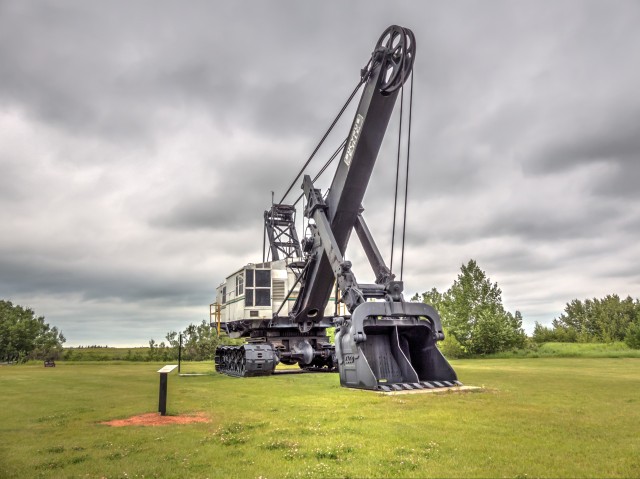
A Bucyrus Erie model 120B shovel at the Diplomat Mine interpretative site.
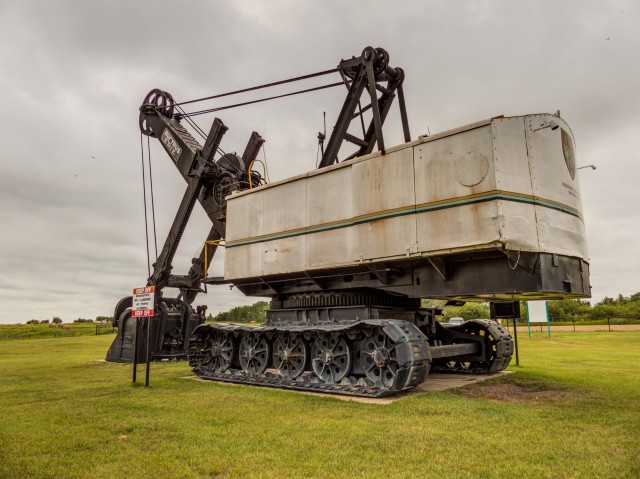
This beast was built in 1944.
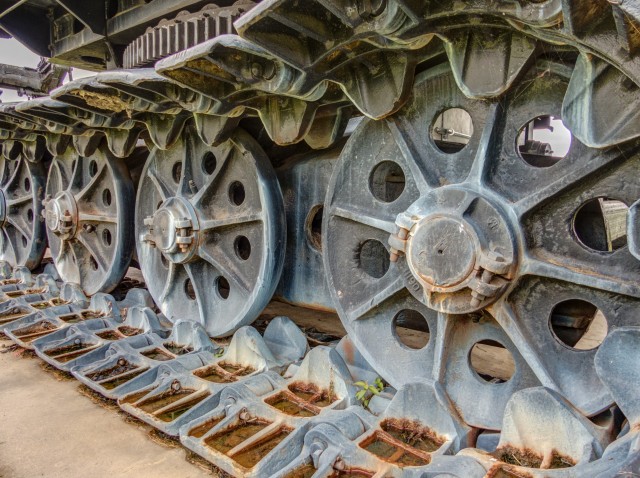
A close up of the massive tracks.
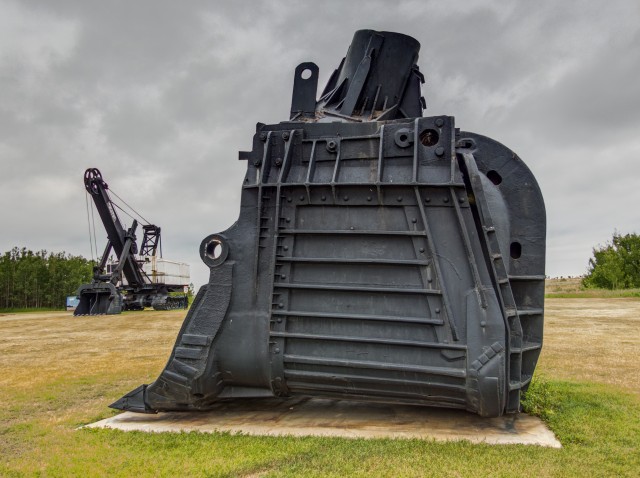
The bucket from “Mr Diplomat.”
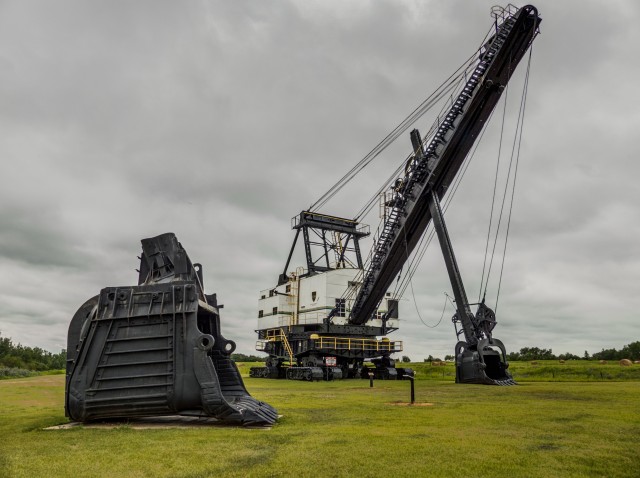
A leviathan of a machine, a Marion 360 stripping shovel.
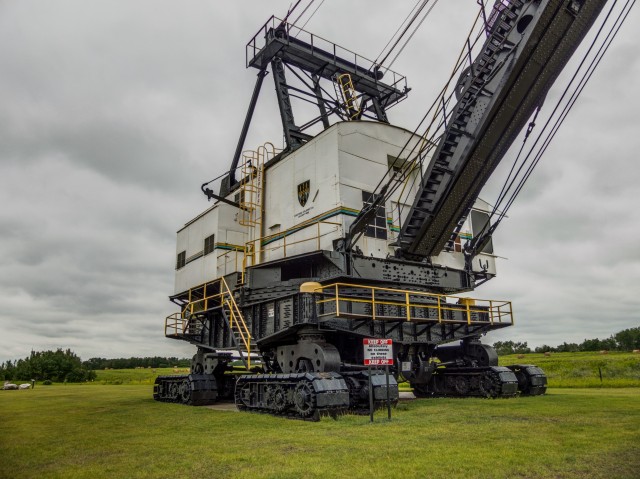
It makes the 120B seem almost tiny in compassion.
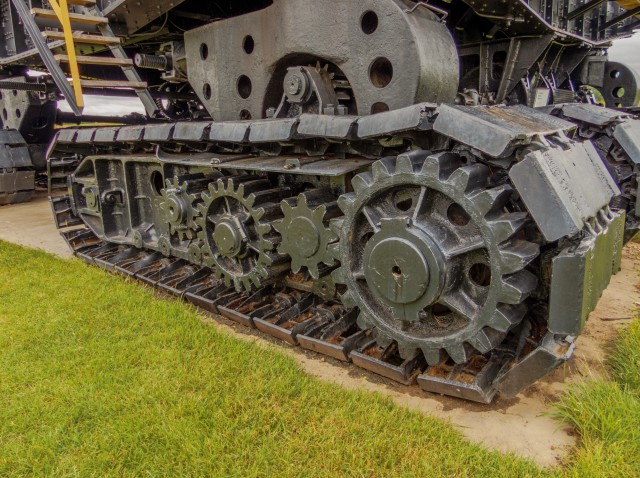
One of eight tracks supporting the machine.
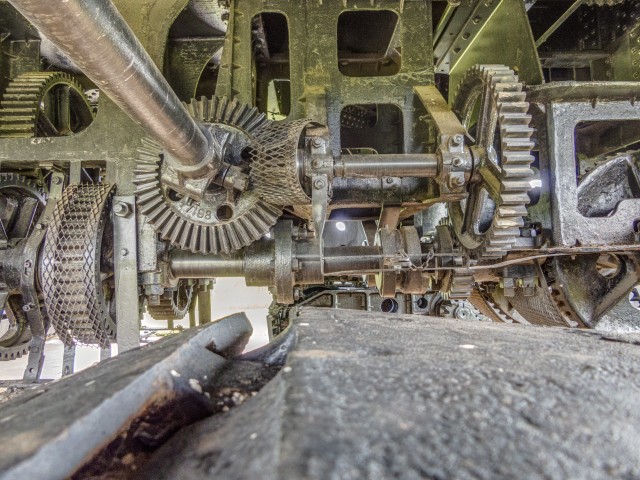
Lost of gears and the like on the underside.
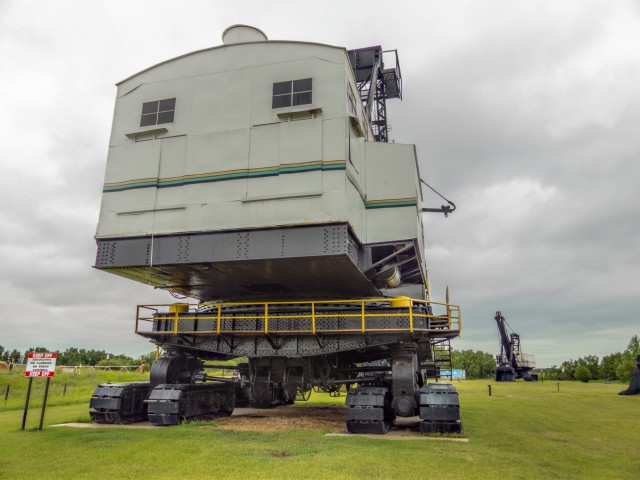
It’s hard to describe just how big these machines are.
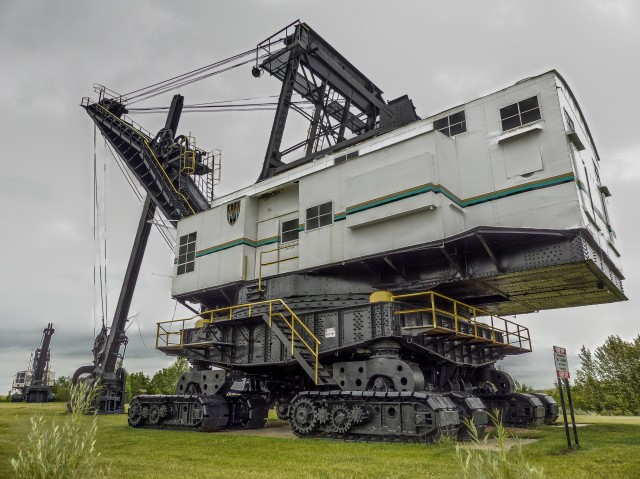
She was built in 1927.
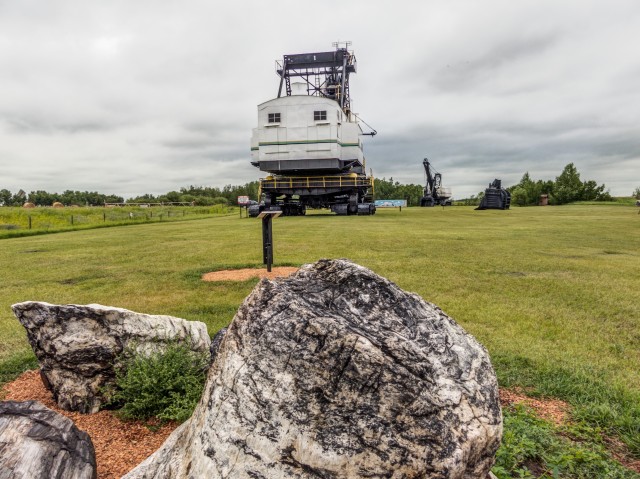
Occasionally petrified wood, like in front, would be unearthed at the mine.
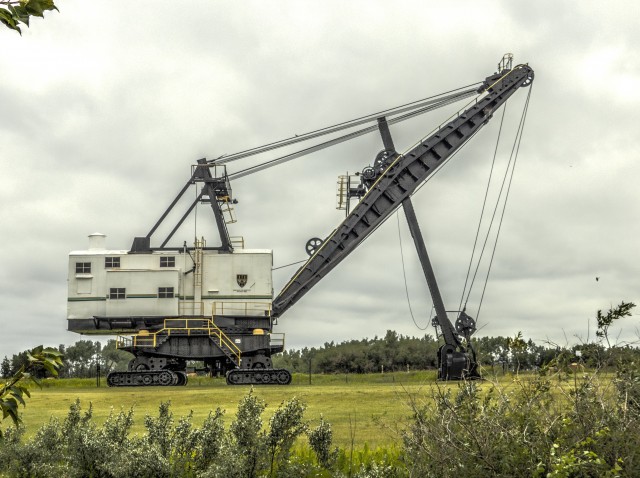
This shovel worked at the Diplomat Mine from 1950 to around 1980.
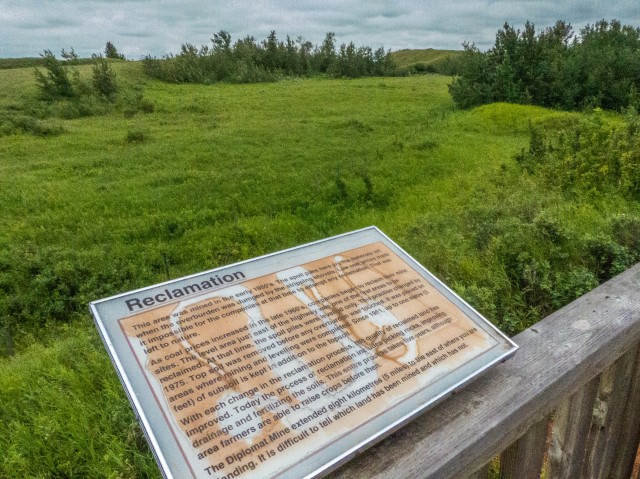
Reclaimed land at the mine.
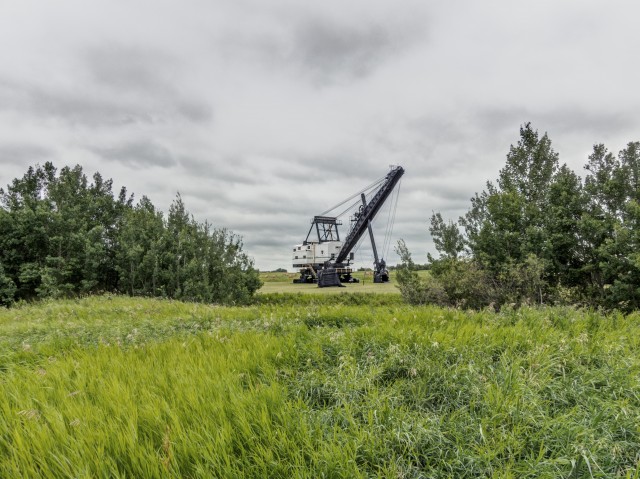
It must have been something else seeing this machine at work.
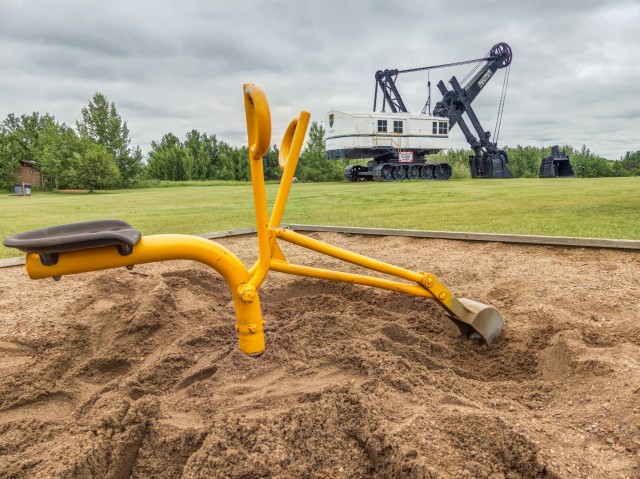
Ready…set…dig!
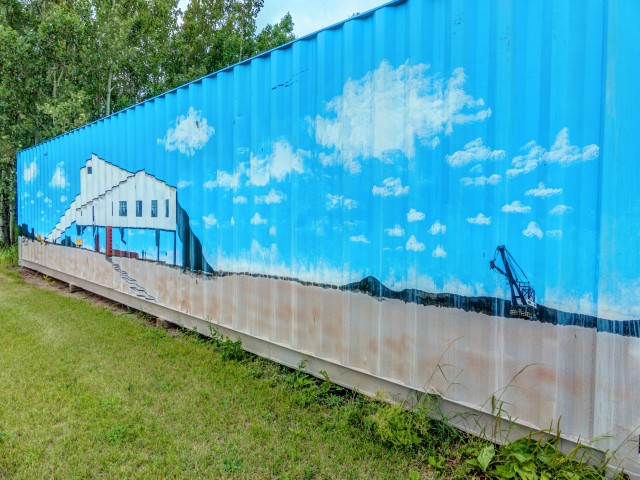
A mural seen at the site.

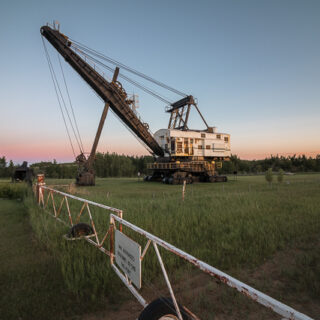
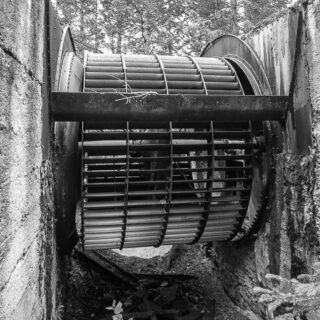
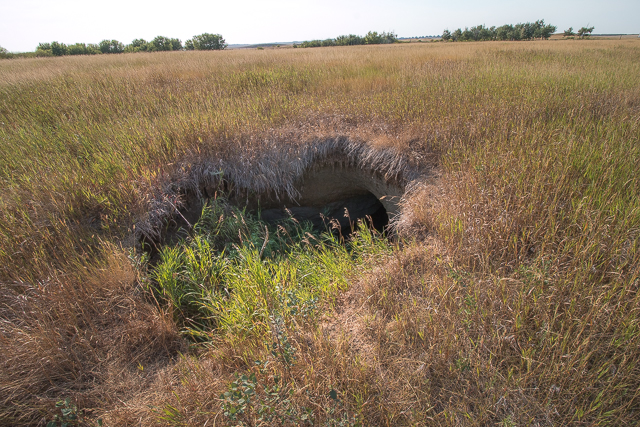
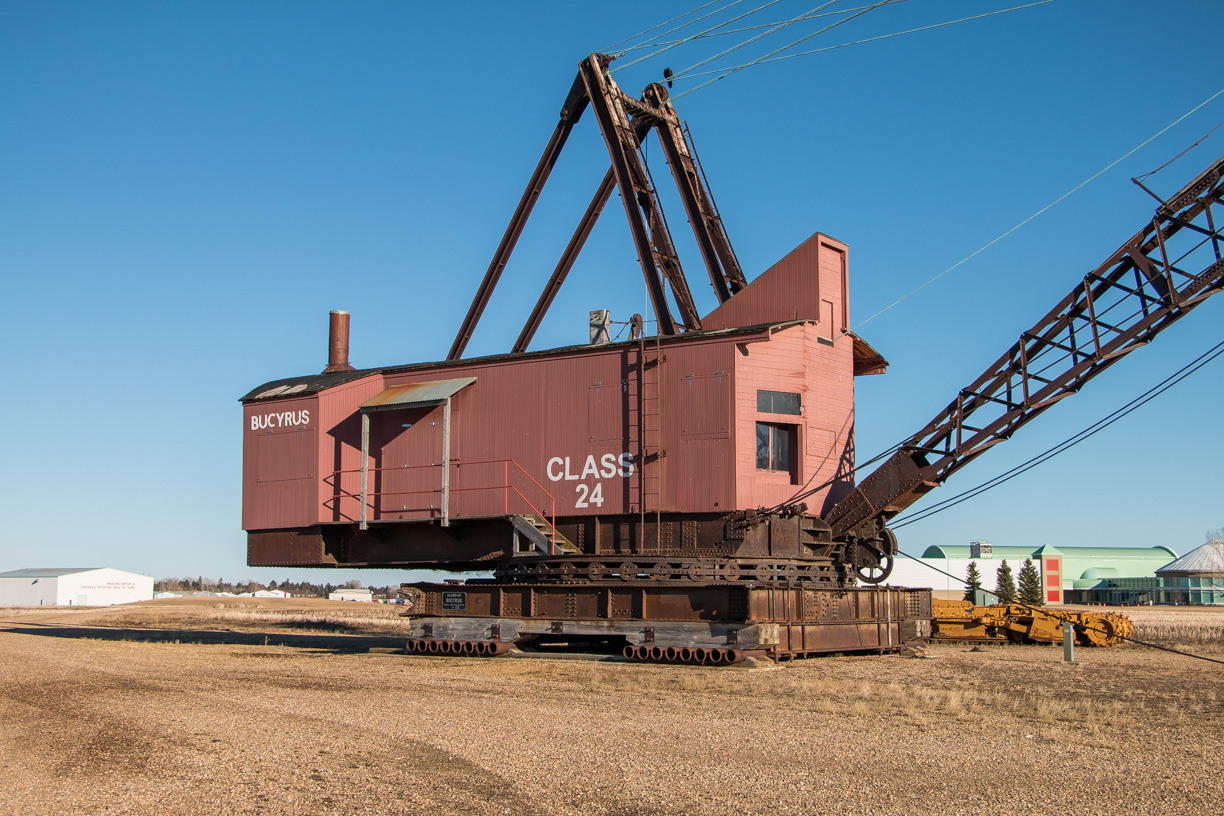
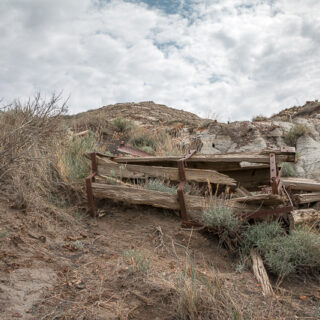

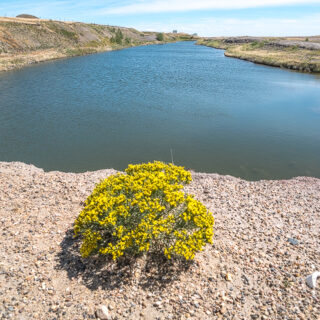
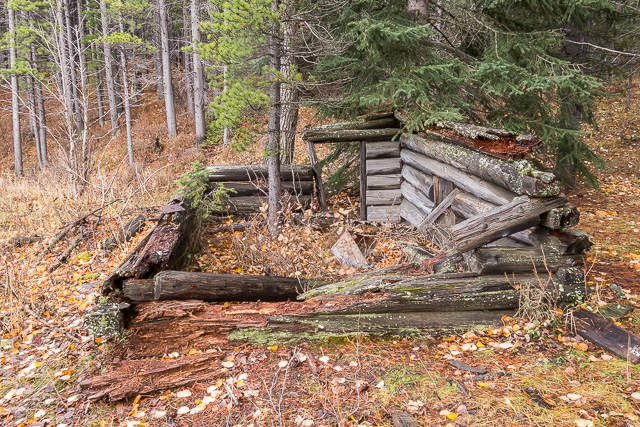
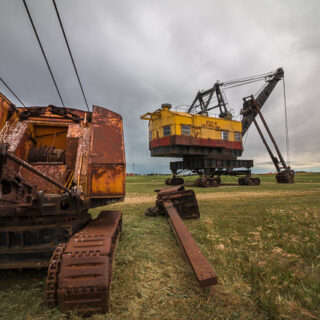
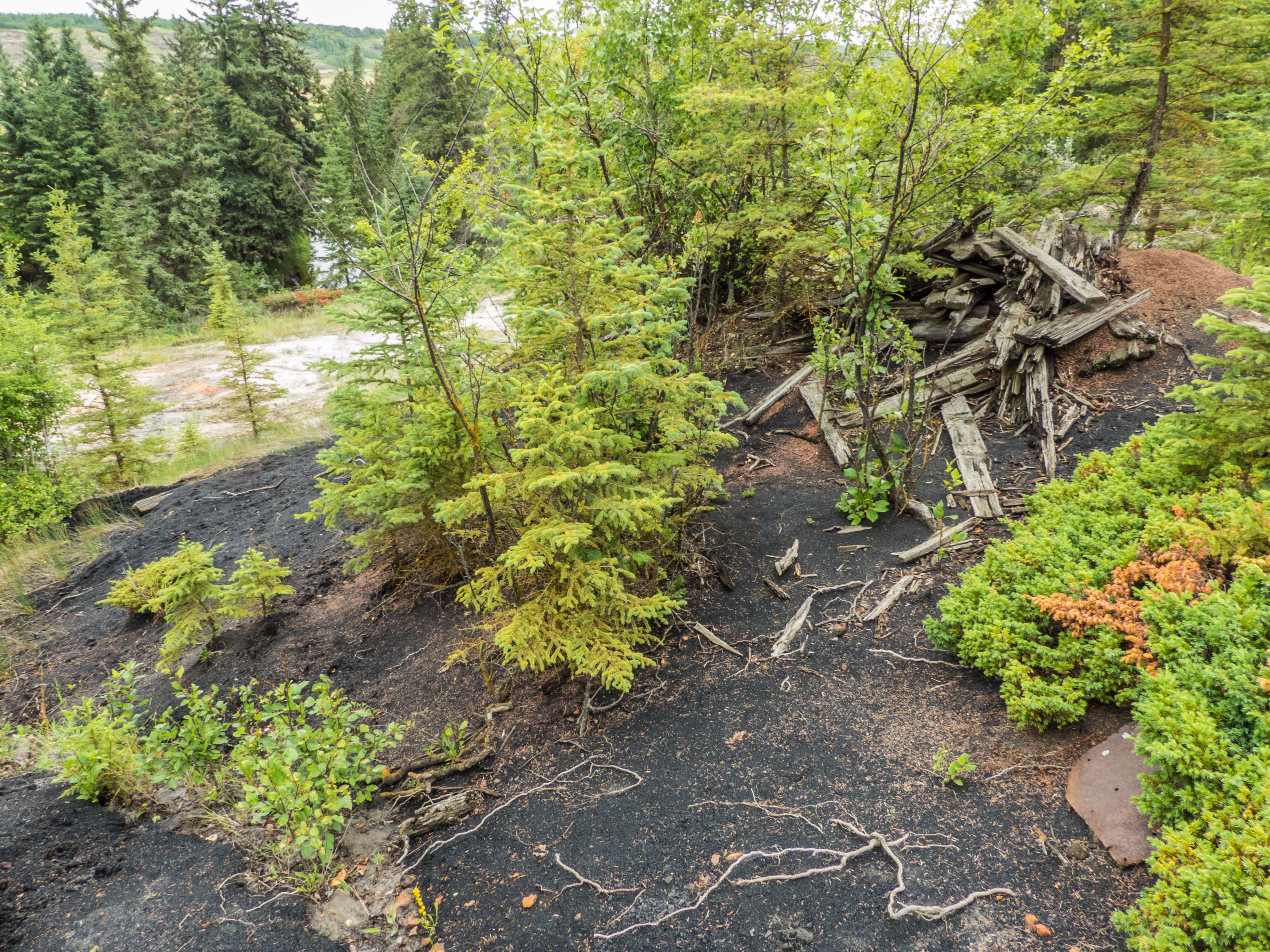
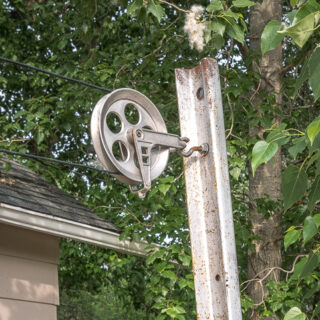
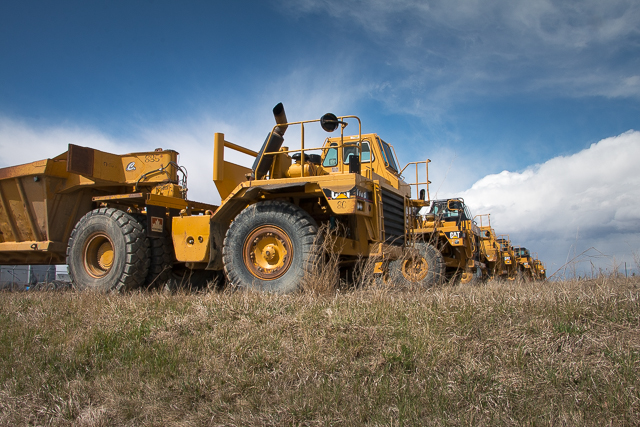
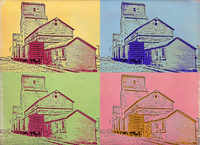





And these are actually small compared to today’s equipment but if you consider these relative to the vehicles of that time period when they were built they WERE massive!
It amazing just how big these machines get. Yup, these ones are huge, but not in the context of what’s out there today. Thanks for commenting!
Another little aside, Chris. I correspond with an old fellow who lives in Illinois and was employed by the Peabody Coal Company for quite a few years. I met him on another site I go to. He lived not too far from the mine where the Marion 360 began its life! One of his neighbors, an old fellow in his 90s, also worked at coal mines in Illinois and he worked at that mine. He told my friend that he remembered helping dismantle the 360 in 1949 so it could be sent to a mine in Canada! Kinda cool!
Wow, that is cool!
Chris, just a few little clarifications on your story. The Marion 360 came from a mine in Illinois. It was actually a dragline when it was operated in Illinois. Marion introduced both the 350 and 360 models in 1927 and they were at that time the largest land machines in the world. The 350 was a stripping shovel, and the 360s were essentially 350s but in a dragline configuration. However, when the 360 came to the Diplomat Mine, it was converted into a stripping shovel.
The 360 worked at the mine from 1950 until 1962. It was parked after the Bucyrus 950-B began working at the mine. But in 1976, as coal production reached a peak, the Marion was re-conditioned and put back to work. It then worked until 1980 and was parked again, pretty well exactly where it sits now.
The Bucyrus 950-B also came from a mine in Illinois. It was originally built in 1935 and came to Forestburg in 1962. It worked until 1984 and was then parked. It was scrapped in 1990-91.
Tim, as always I can count on you for information. Thanks, I have updated the article to reflect this new data.
Wow, huge! I’m amazed things that old could be that big.
Huge is an understatement!
More wallpaper for my ‘puter, so many good pics mate!
Thanks, we enjoy sharing them.